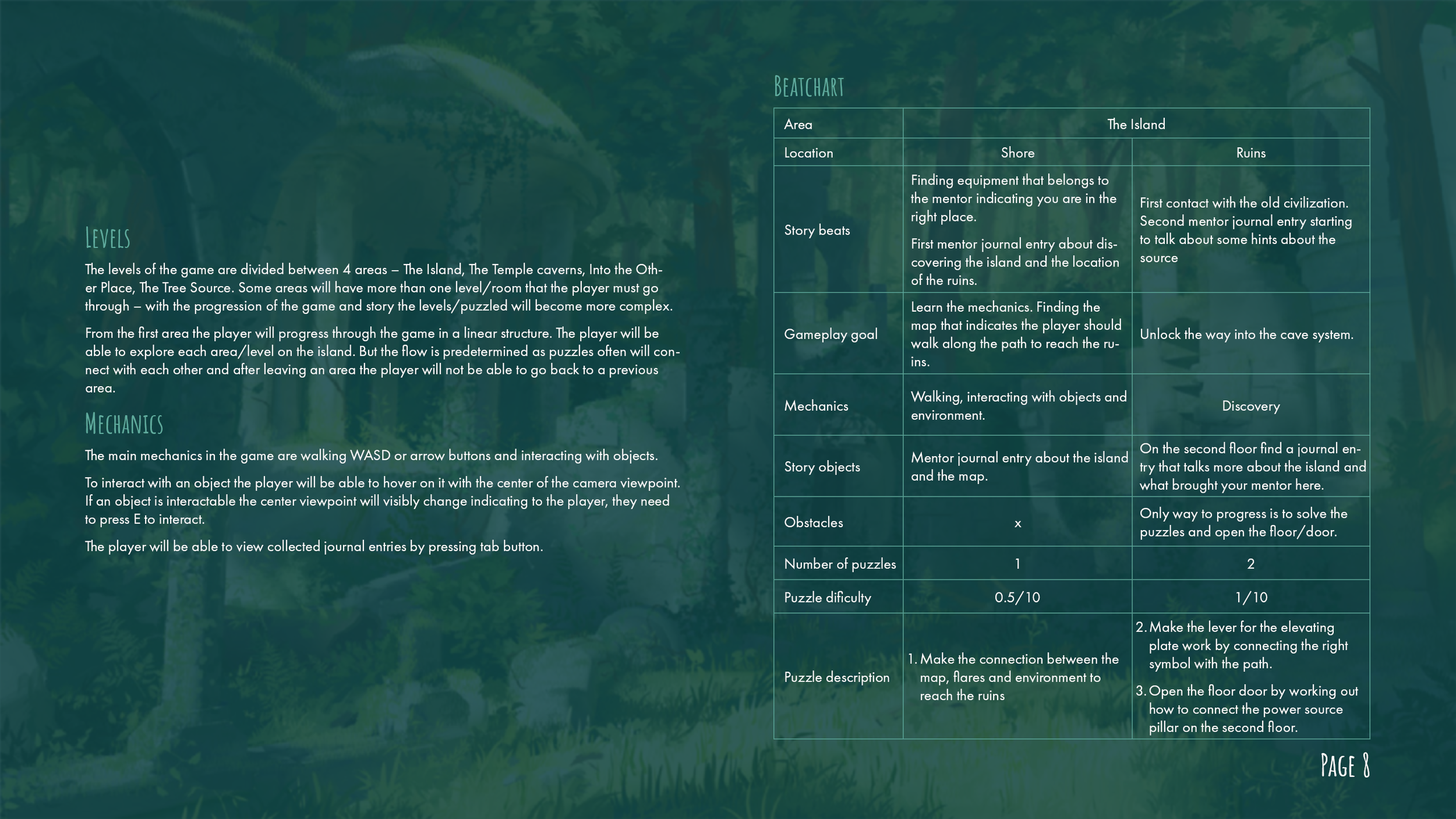Seeker
Gameplay Goals and Core Concept
The goal of the player is to reach the heart of the island and find their mentor. The player will need to solve puzzles to progress through all areas of the game to achieve this goal.
Explore the environment to find the way to solve the puzzle
Solve the puzzle
Find your mentor
Unravel the mystery of the island
The player will need to pay attention to their surroundings in each area to discover the clues needed to solve the puzzles in that area. During the game, the player will explore the whole island, solve puzzles, and find journal entries of the mentor, which will further the story. In the end, the player will learn the mystery of the island and learn the fate of the mentor.
Plot Summary
The game takes place in the 18th century, but the player has to allow for the belief that there can be something more fantastical. The main character is the apprentice to a professor. Together they have been researching the source of anomalies happening at sea. The mentor’s disappearance leads the apprentice to the coordinates of a small island. Finding familiar equipment and journal the apprentice knows they are in the right place. Now they must find their mentor.
The Making of the GDD and Prototype
As part of a Level Design elective, I had to produce a Game Design Document and a Unity prototype of a level from scratch.
I began by formulating a concept. The concept is then turned into a one-pager that outlines the genre, theme, setting, core mechanics, plot, internal, external, and gameplay goals. A mood board with an overview of the planned visual experience is also included.
The first thing that I had fully fleshed out was the plot with a beginning, middle and an end. The plot is important in my linear puzzle game since it motivates the player to keep going and serves as a reward for solving puzzles. A plot also helps me create a beat chart by outlining the environments the player will encounter and which ones require more explanation.
Now that I had a good layout of how I want the game to progress I wrote down the player and environmental rules describing what actions the player is able/not able to perform and how the environment should react in-game. After creating an annotated map I started grey boxing in Unity while looking for the right assets that will convey my design for the final prototype.
Designing puzzles was my favourite part of the project. I sketched different puzzles in a notebook figuring out how to connect puzzles to create a cool chain of events. I wrote out the descriptions and asked for feedback if people understood how the puzzles work by description alone. I decided to include visualisations for the more complex puzzles in the GDD to make sure that my design is not misunderstood.
The final part of the project was adding the 3D assets, controller and skybox to the unity scene. Positioning assets was done based on my design and my sense of esthetics while constantly going between player view/ world view. Yay final final step building a working prototype without errors. Every step of the way intended user experience is considered.
Software used in this project: Illustrator, InDesign and Unity 3D.
If you are interested to learn more, please check out the full GDD describing the story and flow of the starting area.
See GDD below or view in a new tab by clicking the button


























